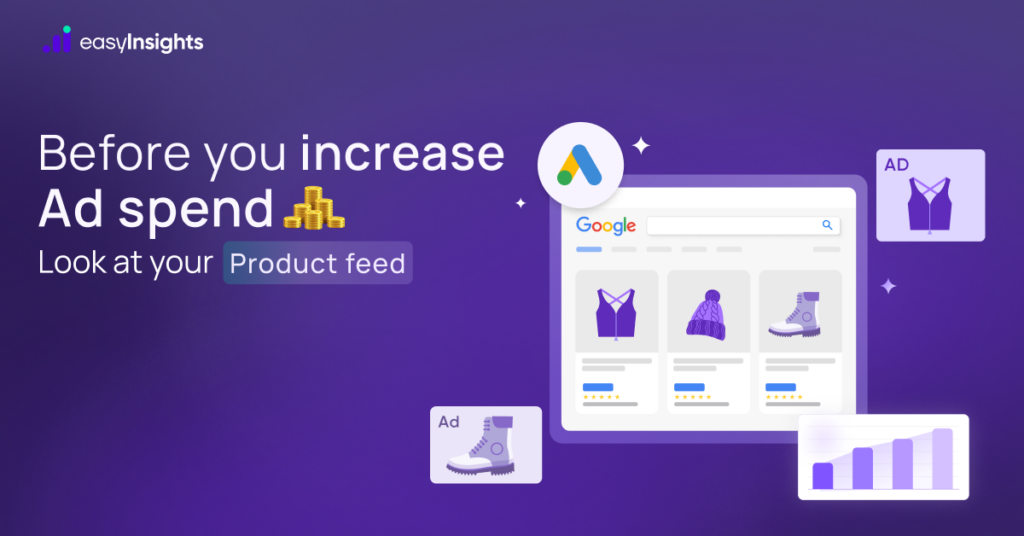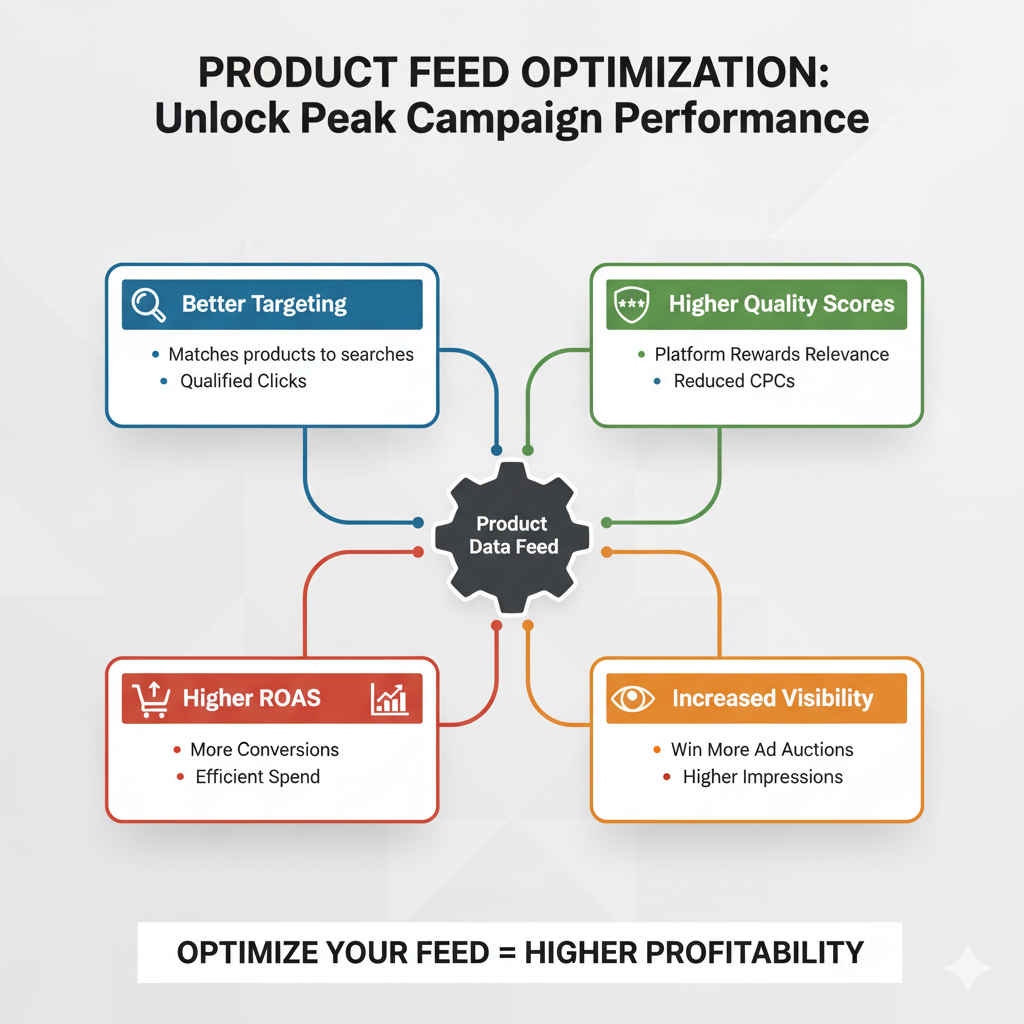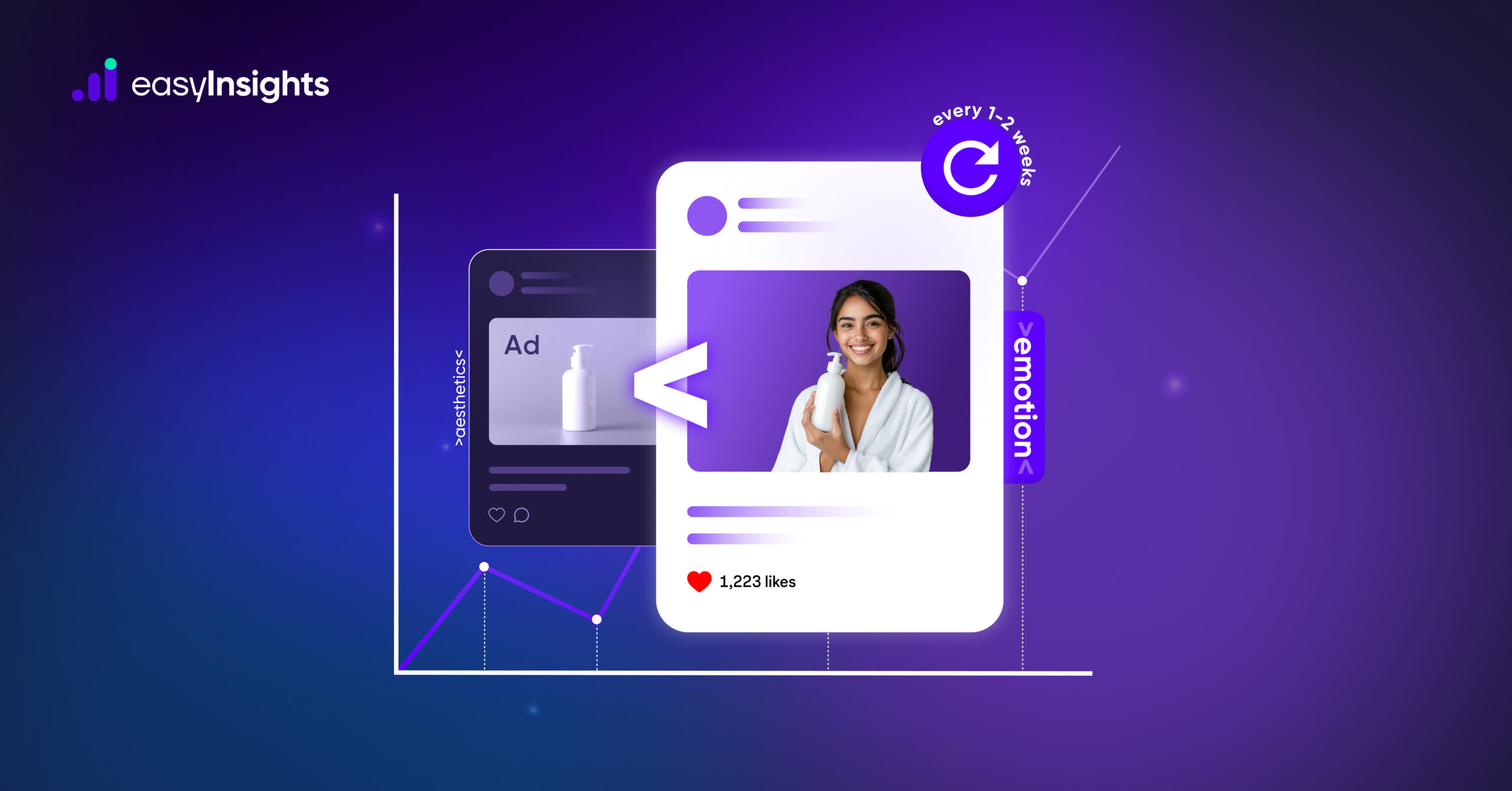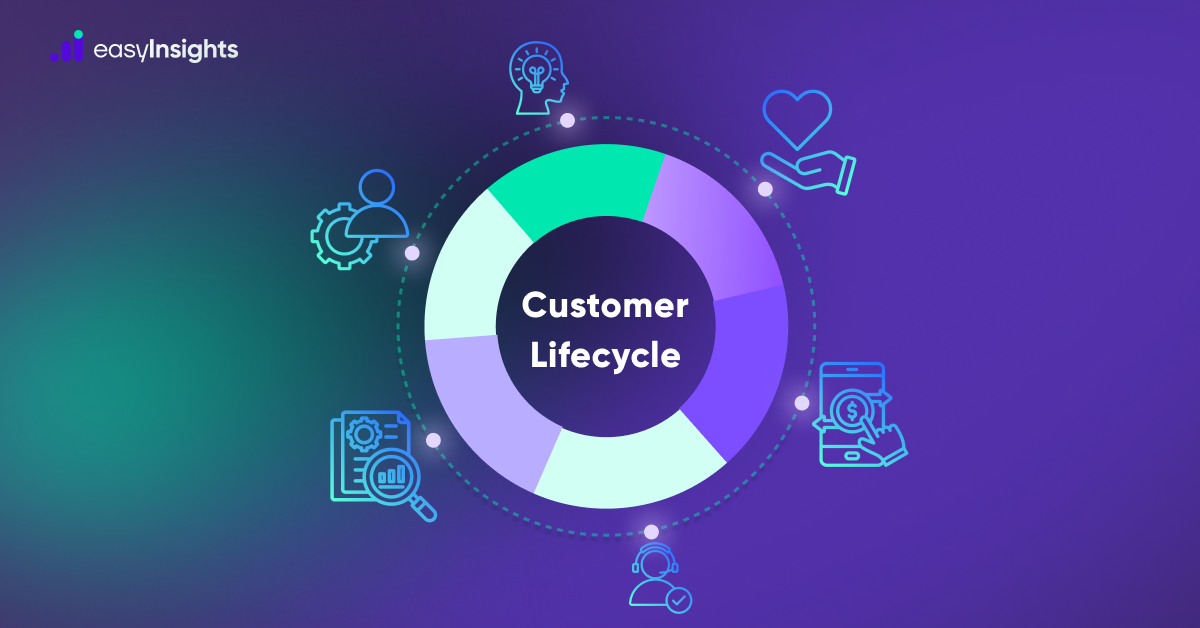
When performance drops in Google Shopping or Meta ads, many marketers assume the quick fix is simple: spend more money.
But here’s the reality: If your product feed isn’t optimized, increasing budgets is like pouring water into a leaky bucket. You’ll continue spending, but the results won’t scale the way you expect.
That’s why, before you ramp up ad spend, it’s crucial to pause and take a closer look at your product feed.
In this blog, we’ll delve into why product feed optimization matters, the common mistakes brands make, and practical steps you can take to fix it before investing more in ads.
Jump ahead to:
What is a Product Feed
A product feed is like a digital catalog or menu card of all the products you sell online. It contains key details such as product name, price, image, description, size, color, availability, brand, and category.
Platforms like Google Shopping, Facebook (Meta) Ads, Instagram, use this product feed to understand what you’re selling and show your products to the right people.
Think of it this way:
- If your online store is the restaurant, then the product feed is the menu.
- Just like a customer chooses food based on the menu details, online shoppers (and ad algorithms) decide whether to click on your product based on how clear and detailed your feed is.
The better and more accurate your product feed, the higher the chances of your products appearing in search results, getting clicks, and driving conversions.
A product feed is the foundation of your e-commerce advertising strategy – because without an optimized feed, your ads on Google, Meta, or Amazon won’t perform at their full potential.
Additional Reading: How deep-diving into Product & SKU Intelligence helped our client to improve ROI by 45%
Why Ad Spend Alone Doesn’t Fix Performance
Many marketers fall into the trap of thinking that if an ad campaign isn’t working, the easiest fix is to spend more money. It feels logical, more budget should mean more clicks, more traffic, and more sales. But in reality, more money doesn’t always equal better results.
Here’s why: platforms like Google Shopping, Performance Max (PMax), and Meta Advantage+ Shopping Campaigns (ASC) don’t just run your ads based on budget. They rely on the quality of your product feed to decide who sees your ads, when they see them, and how relevant those ads are.
If your feed is messy, missing product titles, poor descriptions, incorrect GTINs, or low-quality images then even with a bigger budget, your ads won’t be shown to the right audience. The platforms simply don’t have enough accurate information to match your products with shoppers who are actually searching for them.
Think of it like this: putting more fuel into a car won’t make it go faster if the engine isn’t working properly. The same goes for advertising, a weak product feed means wasted ad spend.
In short, before you pump more money into ads, make sure your product feed optimization is in place. This way, every dollar you spend works harder to bring in the right clicks, conversions, and higher ROAS.
Common Feed Issues That Hurt Campaigns
A product feed is like your store’s digital catalog, and if that catalog is messy, your ads will struggle no matter how much you spend. Here are some of the most common feed issues that silently drain your budget and hurt campaign performance:
1. Incomplete or Incorrect GTINs/IDs
GTINs (Global Trade Item Numbers) or product IDs are like your product’s fingerprint. If they’re missing or wrong, platforms like Google Shopping can’t match your products with relevant searches. This means fewer impressions, missed opportunities, and weaker ad performance.
2. Poor or Missing Product Titles and Descriptions
Imagine browsing a store where half the products have vague or blank labels. That’s what happens when your feed has weak product titles and descriptions. Without keywords and clear details, algorithms don’t know when to show your ads and shoppers don’t feel confident enough to click.
3. No Use of Custom Labels for Segmentation
Custom labels are one of the most underrated tools in feed management. They let you group products (e.g., “bestsellers,” “seasonal,” “high-margin”) for smarter bidding and reporting. Without them, you can’t segment your campaigns properly, so your budget gets spread too thin across products that don’t perform equally well.
4. Misaligned Product Categories
Platforms rely on product categories to place your ads in the right search results. If your products are miscategorized, a smartwatch listed under “accessories” instead of “wearables”- your ads might show up in irrelevant searches, leading to wasted clicks and poor conversion rates.
5. Outdated Prices, Availability, or Images
Nothing frustrates a shopper more than clicking on an ad for a product that’s out of stock or priced differently than shown. Outdated data not only hurts customer trust but also lowers your quality score with platforms, making your ads less competitive.
These issues might look small, but together they create a big barrier between your ads and potential buyers. Fixing them through product feed optimization ensures your campaigns run smoothly, spend efficiently, and actually drive sales.
Additional read : 7 Marketing Optimization Ways to Get 20% More From Google Ads
Why Optimizing Your Product Feed Matters
If your product feed is the “engine” of your campaigns, then optimizing it is like tuning that engine for peak performance. A well-structured feed doesn’t just make your ads look better, it directly impacts how platforms like Google Shopping, Performance Max (PMax), and Meta ASC deliver your campaigns. Here’s why it matters:

1. Better Targeting and Relevance
When your titles, descriptions, and categories are clear and keyword-rich, ad platforms can match your products with the right search queries. This means your ads show up for shoppers who are actually looking for what you sell leading to more qualified clicks.
2. Higher Quality Scores → Lower CPCs
Google and Meta reward relevance. A clean, optimized feed improves your quality score, which reduces your cost-per-click (CPC). In simple terms, you’ll pay less to get more people onto your site.
3. Improved Visibility in Search/Shopping Ads
An optimized feed increases your chances of winning ad auctions and showing up in the right placements. That means more impressions in front of the right audience without needing to inflate your budget.
4. Higher ROAS Without Increasing Spend
At the end of the day, every marketer cares about ROAS. By fixing your feed first, your campaigns become more efficient, delivering higher conversions from the same budget. Essentially, you’re making your money work harder instead of just spending more.
Feed optimization is the secret weapon to unlocking campaign efficiency, better visibility, and higher profitability, without burning through extra budget.
Practical Steps to Optimize Your Product Feed
Optimizing your product feed doesn’t have to be complicated. Small tweaks can make a huge difference in how your ads perform across Google Shopping, Performance Max (PMax), and Meta ASC. Here’s a step-by-step guide to get it right:
1. Clean Up Product Titles & Descriptions with Keywords
Your titles and descriptions are the first thing both platforms and shoppers see. Add relevant keywords (brand, size, color, material, etc.) so your products match actual search queries. For example, instead of “Shoes,” use “Men’s Running Shoes – Nike Air Zoom, Size 10.”
2. Ensure GTINs/UPCs Are Accurate
Think of GTINs/UPCs as your product’s passport. If they’re missing or wrong, your products might not show up at all in Google Shopping results. Double-check that every item in your feed has the correct identifier.
3. Use High-Quality Images
Your ad image is your digital storefront window. Blurry, generic, or outdated photos instantly hurt clicks. Use clear, high-resolution images with a plain background to attract attention and build trust.
4. Leverage Custom Labels for Segmentation
Custom labels let you group products into smart categories like “bestsellers,” “seasonal items,” “clearance,” or “high-margin.” This helps you control bidding more strategically instead of treating all products the same.
5. Keep Availability, Stock, and Pricing Updated
Nothing kills trust faster than a shopper clicking an ad only to see “Out of Stock” or a different price on your website. Sync your product feed regularly so that availability, pricing, and promotions are always accurate.
When to Increase Ad Spend
Boosting your ad budget can deliver great results, but only if you do it at the right time. Here are three key signals that tell you it’s safe (and smart) to scale:
1. Once Your Feed Is Clean and Optimized
Don’t pour more money into a broken system. First, fix your product feed with accurate titles, GTINs, custom labels, images, and up-to-date pricing. A healthy feed ensures every extra dollar you spend works harder to bring qualified traffic.
2. When Campaigns Are Profitable at Current Spend
Look at your current ROAS and conversion data. If your campaigns are consistently profitable with the budget you already have, it’s a strong signal that scaling won’t just burn cash but will actually grow revenue.
3. When You Have Enough Data to Scale Efficiently
Ad platforms like Google Shopping, Performance Max, and Meta ASC run on data. Give them enough time and budget to learn which products and audiences perform best. Once you see stable patterns such as strong click-through rates and steady conversions, you can confidently raise the spend to reach more buyers.
Increase ad spend only after the foundation is set. First optimize, then test, and finally scale. This way, you’ll grow your results sustainably instead of wasting budget.
How EasyInsights can help in Product Feed Enhancement
Optimizing a product feed goes beyond just cleaning up titles or fixing GTINs. At EasyInsights, we help brands enrich their product feeds with deeper business intelligence, so ad platforms don’t just see products – they see products that are strategically prioritized for performance.
With our feed enhancement solution, you can:
- Prioritize best-sellers → Ensure your top-performing products get maximum visibility in shopping and catalog ads.
- Boost high-margin SKUs → Focus spend on items that not only sell but also drive profitability.
- Promote halo products → Highlight products that spark interest and drive sales of related items.
- Exclude low-performing or out-of-stock items → Avoid wasted spend by keeping only relevant products in circulation.
- Align with payment preferences → Give a push to products that are more likely to convert on prepaid or higher-value payment methods.
By creating smart product sets tailored to your goals, your ads become sharper, more relevant, and more engaging. The outcome? Better click-through rates, stronger conversions, and improved ROI – without needing to inflate your budget.
Conclusion
Throwing more budget at underperforming campaigns is like pouring water into a leaky bucket you’ll spend more but still lose out. The real issue often lies in your product feed. If it’s incomplete, outdated, or unoptimized, no amount of extra spend will deliver consistent results.
That’s why the smarter move is to audit and optimize your feed first. Clean up product titles, fix GTINs, use custom labels, and keep pricing and availability updated. Once your foundation is strong, you can confidently scale ad spend knowing every dollar is driving the right clicks, conversions, and higher ROAS.
Improve your Product feed with EasyInsights – Book a demo now
Additional read: How to use First Party data for your e-commerce brand








